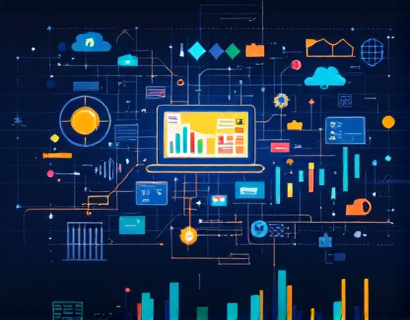Transformative Software Solutions for Educational Institutions: Streamlining Management for Optimal Learning Environments
In the rapidly evolving landscape of education, the integration of innovative software solutions has become pivotal for transforming traditional educational institutions into modern, efficient, and collaborative learning environments. These transformative software solutions are designed to streamline administrative tasks, enhance communication, and optimize resource management, ultimately allowing educators and administrators to focus more on delivering high-quality education.
The primary goal of implementing such software is to create a seamless and integrated system that supports all aspects of institutional operations. From student management and course enrollment to resource allocation and performance tracking, these solutions offer a comprehensive approach to managing the complexities of educational institutions. By automating routine tasks and providing real-time insights, these tools empower educational leaders to make informed decisions and foster a more collaborative and engaging learning atmosphere.
Streamlining Administrative Tasks
One of the most significant benefits of adopting transformative software solutions in educational institutions is the streamlining of administrative tasks. Traditional methods of managing student records, scheduling, and reporting are often time-consuming and prone to errors. With the implementation of advanced software, these processes become automated, reducing the administrative burden and minimizing the risk of human error.
For instance, student information systems (SIS) provide a centralized database for storing and managing student data. This includes academic records, attendance, and demographic information. By having all this data in one accessible location, administrators can efficiently update records, generate reports, and ensure compliance with regulatory requirements. This not only saves time but also enhances the accuracy and reliability of the information used for decision-making.
Similarly, learning management systems (LMS) simplify the process of course management and content delivery. Educators can create, upload, and manage course materials, assignments, and assessments all within a single platform. This reduces the need for physical handouts and paperwork, making the learning process more digital and accessible. Parents and students can also access this information remotely, promoting greater transparency and engagement.
Enhancing Communication
Effective communication is crucial in any educational setting, and transformative software solutions play a vital role in improving communication among students, teachers, and administrators. Communication platforms integrated within these solutions facilitate real-time interactions, reducing delays and miscommunications.
For example, integrated messaging and notification systems allow teachers to send instant updates to students and parents regarding assignments, grades, and important announcements. This ensures that everyone is informed and on the same page, fostering a sense of community and collaboration. Discussion forums and virtual classrooms within the LMS further enhance communication by providing spaces for students to engage in discussions, ask questions, and collaborate on projects.
Moreover, these platforms often include features for feedback and surveys, enabling educators to gather insights from students and make data-driven improvements to their teaching methods. This continuous feedback loop helps create a more responsive and adaptive learning environment.
Optimizing Resource Management
Resource management is another critical area where transformative software solutions can make a significant impact. Educational institutions often face challenges in allocating and utilizing resources efficiently. Advanced software solutions offer robust tools for managing budgets, equipment, and facilities, ensuring that resources are used optimally.
Budget management tools within these platforms allow administrators to track expenses, forecast financial needs, and allocate funds effectively. By having a clear overview of the institution's financial status, decisions can be made with greater precision, reducing waste and ensuring that funds are directed towards areas of highest need.
Asset management systems help track the usage and maintenance of equipment and facilities. This ensures that resources are well-maintained and available when needed, reducing downtime and extending the lifespan of assets. For example, a school can monitor the usage of lab equipment, schedule maintenance, and ensure that resources are not overbooked or underutilized.
Additionally, these solutions often include features for managing procurement processes, from requesting supplies to tracking deliveries. This streamlines the procurement cycle, reduces paperwork, and ensures that necessary items are ordered and received in a timely manner.
Fostering a Collaborative Learning Environment
A key objective of educational institutions is to create a collaborative learning environment where students can thrive. Transformative software solutions support this goal by providing tools that facilitate collaboration and enhance the learning experience.
Collaboration tools within the LMS enable students to work together on group projects, share files, and communicate effectively. Features such as document editing in real-time, virtual whiteboards, and project management boards make it easier for students to collaborate, regardless of their physical location. This is particularly beneficial for remote learning and hybrid models, where students may not be in the same classroom.
Moreover, these platforms often include analytics and reporting tools that provide insights into student performance and engagement. Educators can monitor progress, identify areas where students may be struggling, and intervene promptly. This data-driven approach helps tailor instruction to meet the diverse needs of students, promoting a more inclusive and effective learning environment.
Social learning features, such as discussion boards and peer review systems, encourage students to engage with each other's work, fostering a sense of community and mutual support. These interactions not only enhance learning but also develop essential skills such as critical thinking, communication, and teamwork.
Conclusion
The integration of transformative software solutions in educational institutions represents a significant step towards modernizing and optimizing institutional operations. By streamlining administrative tasks, enhancing communication, and optimizing resource management, these solutions create a solid foundation for delivering exceptional education. As technology continues to evolve, the potential for innovation in education remains vast, offering endless opportunities to improve the learning experience for students and support educators in their vital role.










































